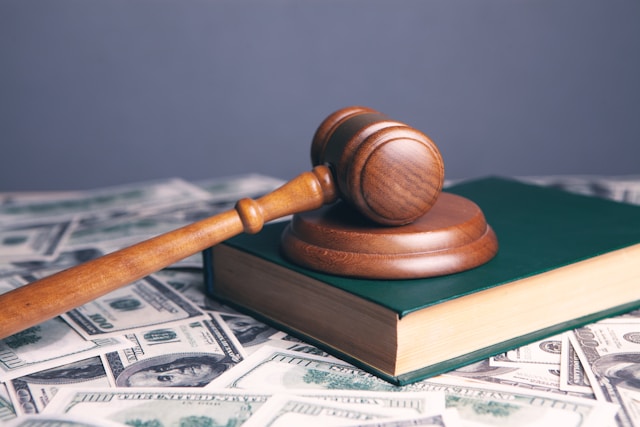Premises liability cases in California encompass a broad spectrum of incidents, spanning from slip and fall accidents to claims of negligent security. These legal proceedings revolve around the obligation of property owners to uphold safe conditions for their visitors. Understanding the intricacies of premises liability litigation, from its inception to its resolution, holds paramount importance for both plaintiffs and defendants. In this discourse, we delve into the multifaceted landscape of navigating premises liability cases in California, shedding light on pivotal aspects from investigation to adjudication.
Investigation and Case Preparation
Gathering Evidence
The journey into premises liability cases typically embarks with a meticulous investigation. Plaintiffs, often represented by attorneys specializing in personal injury law, such as a Los Angeles premises liability lawyer, engage in gathering evidence to substantiate claims of the property owner’s negligence. This evidence arsenal may encompass photographic documentation, witness testimonies, incident reports, and pertinent maintenance records.
Determining Liability
At the crux of premises liability cases lies the establishment of the property owner’s duty of care and potential breach thereof. Under California law, property owners are held responsible for maintaining safe premises and duly warning visitors of potential hazards. Plaintiffs shoulder the burden of demonstrating that the property owner either knew or ought to have known about the perilous condition and neglected to address it.
Expert Evaluation
In instances of complexity, expert testimony assumes a pivotal role. Experts versed in fields such as building code compliance, safety regulations, or accident reconstruction offer insights into whether the property owner adhered to industry standards. Their evaluations serve to bolster the plaintiff’s case by fortifying claims of negligence.
Legal Proceedings and Strategies
Filing the Complaint
Following the completion of the investigation and evidence compilation, the subsequent step entails filing a complaint with the relevant court. This document delineates the plaintiff’s grievances against the property owner and seeks restitution for the injuries sustained. Defendants, represented by legal counsel, are duly served with the complaint and afforded the opportunity to respond.
Discovery Phase
During the discovery phase, both parties engage in the exchange of pertinent information and evidence. This stage permits each side to assess the strengths and weaknesses of their respective cases. Discovery methods may encompass interrogatories, depositions, and requests for document production. Skillful attorneys utilize this phase to construct their arguments and anticipate the strategies of the opposing party.
Mediation and Settlement Negotiations
A substantial portion of premises liability cases in California find resolution through mediation or settlement negotiations. Mediation involves a neutral third party facilitating discussions aimed at reaching a mutually acceptable resolution. Settlement negotiations afford the parties the opportunity to delineate terms without judicial intervention. Seasoned attorneys adeptly advocate for their clients’ interests during these proceedings, striving for a favorable resolution sans trial.
Trial and Verdict
Trial Preparation
In instances where settlement eludes attainment, the matter proceeds to trial. Attorneys meticulously prepare for trial by honing legal arguments, preparing witnesses, and strategizing jury selection. Comprehensive trial preparation stands as a prerequisite to presenting a compelling case before the court.
Presentation of Evidence
Throughout the trial, both parties proffer their evidence and arguments before a judge and jury. Plaintiffs bear the onus of proving the property owner’s negligence by a preponderance of the evidence, demonstrating that it is more probable than not that the property owner breached their duty of care, thereby precipitating the plaintiff’s injuries.
Jury Deliberation and Verdict
Subsequent to the presentation of evidence, the jury deliberates to render a verdict. In premises liability cases, the jury evaluates whether the property owner’s negligence directly caused the plaintiff’s injuries and determines the extent of damages, if applicable. The verdict marks the culmination of the litigation process, providing closure to both parties.
Conclusion
The navigation of premises liability litigation in California necessitates an in-depth comprehension of legal precepts, evidence aggregation, and strategic advocacy. From the outset to the denouement, each stage mandates meticulous preparation and adept representation. Whether pursuing compensation for injuries or mounting a defense against allegations of negligence, the engagement of seasoned legal counsel, such as a Los Angeles premises liability lawyer, stands as imperative to securing a favorable outcome in these intricate cases.

With a BA in communications and paralegal experience, Irma Dengler decided to make the best of her writing skills. She decided to turn complicated legal matters into something more palatable for the masses. Therefore, Irma became a law communicator who writes about everyday problems so everyone can understand them and take the appropriate action. She specializes in personal injury cases, as they are more common than anyone thinks, but her areas of expertise also include civil law, criminal law, insurance-related issues, and more.
